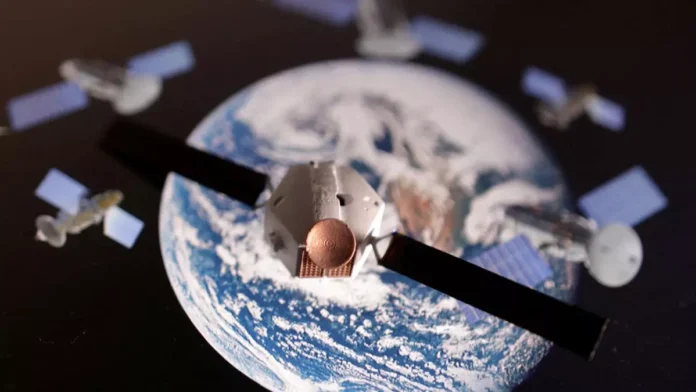In an ever-evolving world of technology, the space industry has taken a giant leap towards progress with the launch of a revolutionary satellite. This latest innovation, designed to track and monitor objects as small as five centimetres, has the potential to revolutionize the way we observe and analyze orbital activity. With a high revisit rate for frequent and precise observations, this satellite is set to revolutionize the way we understand and manage our space environment.
The satellite, aptly named “TrackStar,” is the brainchild of a team of scientists and engineers at a leading space agency. It has been specifically designed to address the growing concerns of space debris, which has become a critical issue in recent years. With over 20,000 objects larger than ten centimetres currently orbiting the Earth, the threat of collisions and the resulting debris is a real and imminent danger. The need for a reliable and accurate tracking system has never been more pressing.
TrackStar’s main mission is to provide a comprehensive overview of the objects in orbit around the Earth, including all types of debris, satellites, and other space objects. It boasts state-of-the-art technology and is equipped with advanced sensors and cameras, enabling it to detect objects as small as five centimetres. This is a game-changer, as previous tracking systems were only able to detect objects larger than ten centimetres. With TrackStar, we are now able to monitor even the tiniest pieces of debris, which can still pose a significant threat to operational spacecraft.
One of the most impressive features of TrackStar is its high revisit rate, which is a measure of how often a satellite can pass over a specific area. The satellite can orbit the Earth every 90 minutes, which means it can cover the entire globe in just 24 hours. This gives TrackStar the capability to provide real-time data and images of any changes or developments in the orbital environment. This is a tremendous improvement compared to previous systems, which had much longer revisit rates.
But what sets TrackStar apart from other tracking systems is its ability to provide precise observations of orbital activity. With its advanced sensors and cameras, the satellite can capture detailed images and data, even from objects as small as five centimetres. This level of accuracy is crucial for monitoring and predicting the movement of space debris and satellites, enabling us to take proactive measures to avoid collisions and potential damage to operational spacecraft.
The benefits of TrackStar extend beyond just tracking and monitoring objects in orbit. It also has the potential to aid in the clean-up efforts of space debris. With its high-resolution images and data, scientists can identify and track debris, facilitating its removal from orbit. This will not only help reduce the threat of collisions but also contribute to the sustainable use of space for future generations.
The launch of TrackStar has generated excitement and anticipation among the scientific community and space enthusiasts worldwide. It marks a significant milestone in our journey to better understand and manage our ever-growing space environment. The satellite’s capabilities are unparalleled and are set to transform the way we view and interact with space.
It is also worth noting that TrackStar is not a standalone system, and it will work in conjunction with other tracking systems and databases to provide a comprehensive view of the orbital environment. This collaborative effort will only enhance our ability to monitor and manage the space around us.
In conclusion, the launch of TrackStar is a remarkable achievement and a testament to the ingenuity and dedication of the team behind its development. This satellite has the potential to revolutionize the way we track and monitor objects in orbit, providing us with the necessary information to ensure a safe and sustainable use of space. With its high revisit rate and precise observations, TrackStar is a significant step towards a cleaner and safer orbital environment for future generations.


